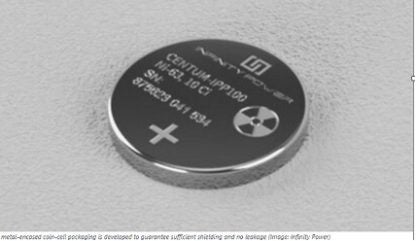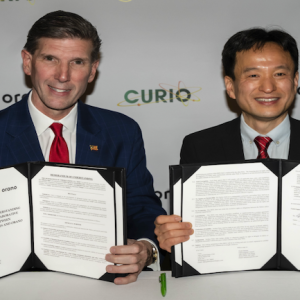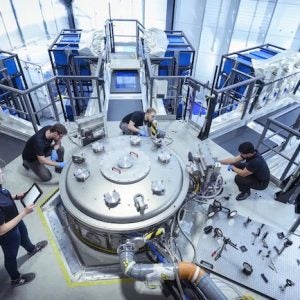
California-based Infinity Power says it has developed a very powerful and long-lasting nuclear battery based on electrochemical energy conversion. The battery, developed with support from the US Department of Defense, has demonstrated an overall efficiency of more than 60%.
“Compared to other radioisotope energy conversion methods with low efficiency (less than 10%), it marks the highest level of overall efficiency ever achieved,” the company claimed. “This shows that the upcoming commercial release of next-generation radioisotope power sources holds out huge hope.”
Nuclear batteries utilise the energy released by the decay of nuclear isotopes, converting it into electrical energy through semiconductor converters. Infinity Power says its battery uses novel electro-chemical energy conversion and “can provide tens of milliwatts of power for over 100 years”.
Infinity Power says the technology is scalable, making possible a wide range of power generation, from nanowatts to kilowatts. “Because of its higher efficiency, it requires less radioisotope to produce the same amount of power as other conversion processes. Furthermore, compared to previous methods that only allow for limited selection, it offers a significantly wider range of radioisotope materials’ selection.”
It could find use in many applications such as implantable medical devices, deep-sea power systems, space power systems, remote area power systems, microgrid power systems and more. The scalable design and mass producibility of the battery “will allow for speedy market acceptance”.
Infinity Power CEO Jae Kwon said the goals are “to guide this discovery toward a prosperous product launch and begin a new chapter in the history of revolutionary nuclear energy storage solutions”.
Earlier this year, Beijing-based Betavolt New Energy Technology reported that it had developed a 3V nuclear battery that uses radioactive nickel-63 as the energy source and a diamond semiconductor as the energy converter.
Russian researchers have also developed betavoltaic. The team includes researchers from the National University of Science & Technology (NUST-MISiS, formerly the Moscow Institute of Steel & Alloys State Technological University), the Institute of Microelectronics Technology & High Purity Materials of the Russian Academy of Sciences, and the Kurchatov Institute National Research Centre.






